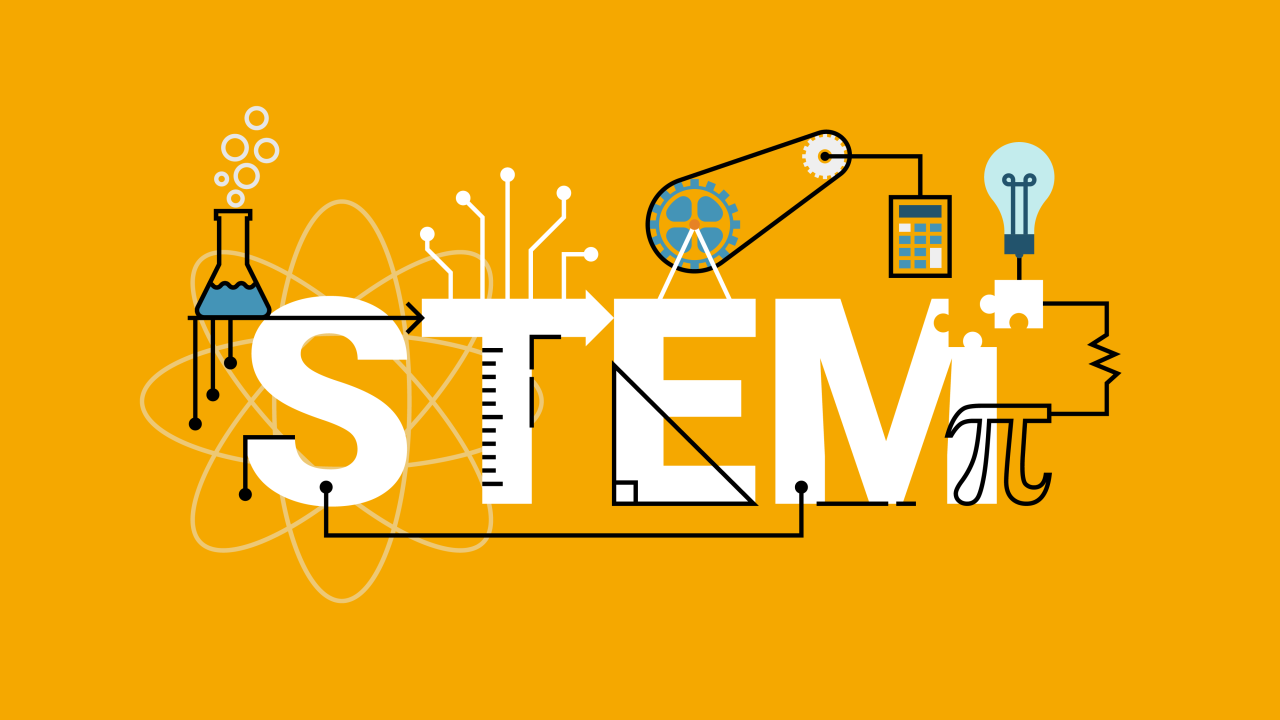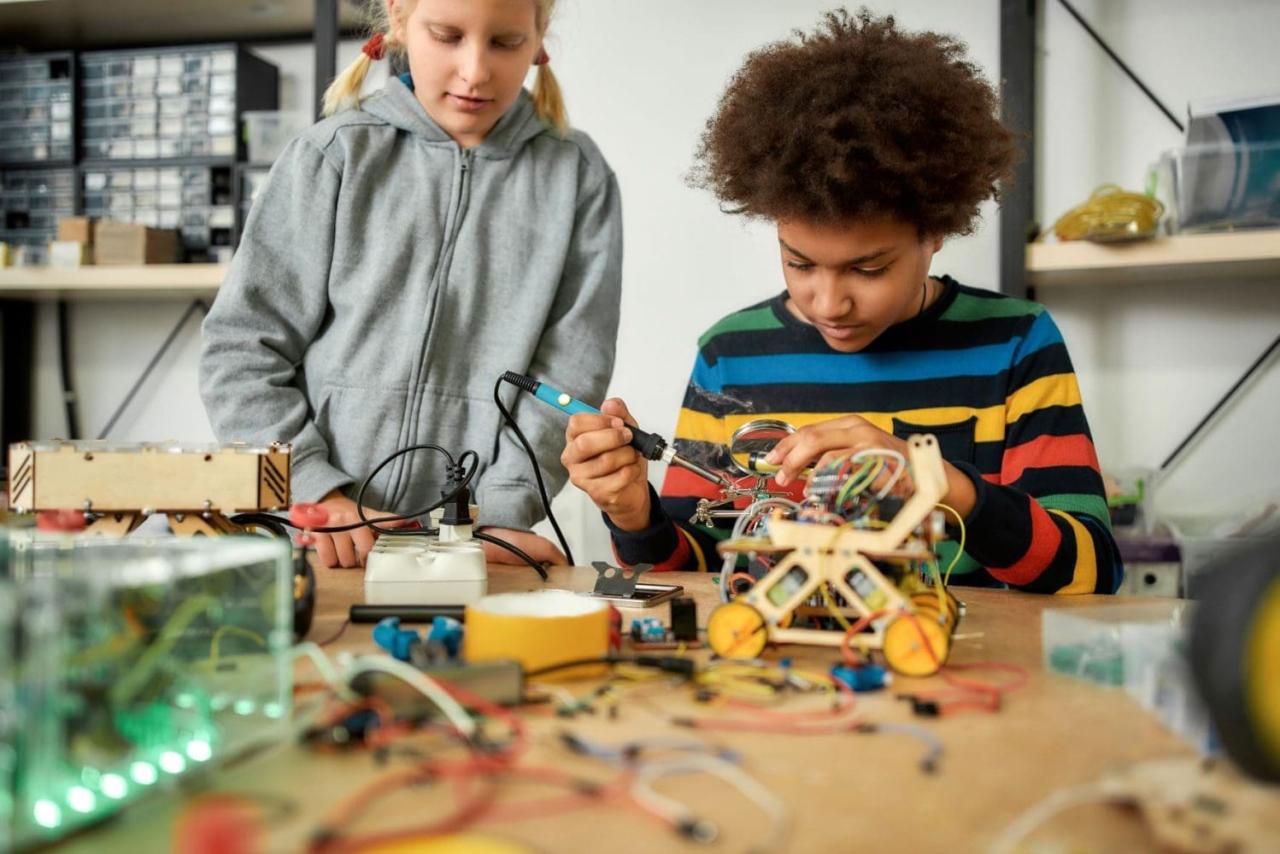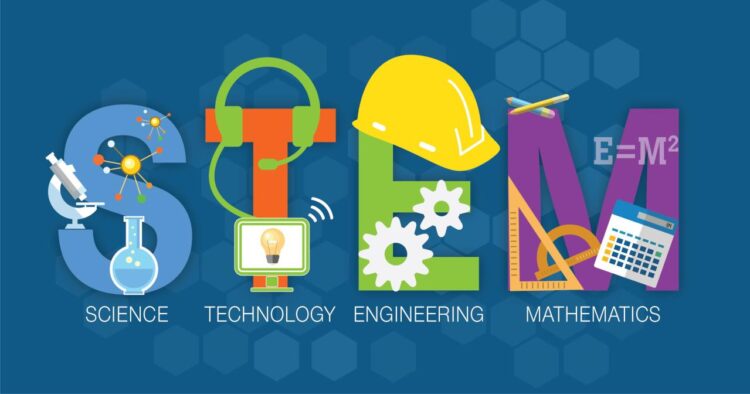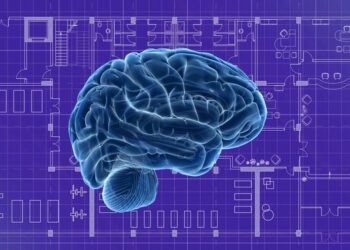The acronym STEM — Science, Technology, Engineering, and Mathematics — has become a global buzzword, and for good reason. Far from being a fleeting educational trend, the emphasis on STEM fields is a fundamental shift in how nations prepare their workforces and drive economic growth. This article delves into the escalating global focus on STEM education, exploring its multifaceted benefits, the challenges it faces, and the innovative strategies being employed worldwide to cultivate a new generation of scientists, technologists, engineers, and mathematicians. Our aim is to provide a comprehensive and insightful look into this critical educational movement, optimized for search engine visibility and AdSense revenue.
The Imperative of STEM in the 21st Century

In an increasingly interconnected and technology-driven world, the demand for individuals proficient in STEM subjects has never been higher. From developing artificial intelligence and sustainable energy solutions to advancing medical breakthroughs and designing resilient infrastructure, STEM professionals are at the forefront of innovation. The competitive global landscape mandates that countries invest heavily in these areas to maintain economic competitiveness and address complex societal challenges.
Historically, education systems often emphasized a broader, more generalized curriculum. However, the rapid pace of technological change and the data-driven nature of modern industries have highlighted a growing skills gap. Many traditional educational pathways no longer adequately prepare students for the nuanced demands of the contemporary job market. This realization has catalyzed a worldwide push to re-evaluate and re-prioritize STEM education.
Why the Global Focus on STEM is Intensifying
Several key factors contribute to the escalating global emphasis on STEM:
A. Economic Competitiveness: Nations understand that a robust STEM workforce is directly linked to economic prosperity. Industries such as information technology, biotechnology, aerospace, and advanced manufacturing rely heavily on STEM talent. Countries that produce a steady supply of these professionals are better positioned to innovate, attract foreign investment, and compete in the global marketplace. A strong STEM foundation fosters high-value industries, leading to job creation and increased national income.
B. Innovation and Research: STEM fields are the bedrock of scientific discovery and technological innovation. From fundamental research in particle physics to applied engineering in robotics, breakthroughs in these areas drive progress across all sectors. Governments and private entities are investing heavily in research and development, and a well-trained STEM workforce is essential to capitalize on these investments and translate scientific knowledge into practical applications that benefit society.
C. Addressing Global Challenges: The world faces numerous pressing challenges, including climate change, resource scarcity, global pandemics, and food security. Solutions to these complex problems invariably lie within the realm of STEM. Engineers are developing renewable energy sources, scientists are researching disease cures, and mathematicians are creating models to predict environmental changes. Equipping a new generation with STEM skills is crucial for developing sustainable and effective solutions to these global issues.
D. Job Market Demands: The job market is rapidly evolving, with a clear trend towards roles requiring STEM expertise. Projections consistently show strong growth in STEM-related occupations, often at salaries significantly higher than non-STEM fields. This trend is not confined to traditional engineering or scientific roles; even in seemingly unrelated sectors like finance or marketing, analytical and data science skills, rooted in mathematics and computer science, are becoming increasingly vital. Therefore, a strong STEM education provides students with in-demand skills and pathways to high-earning careers.
E. National Security: In an age of cyber warfare and advanced defense systems, national security is increasingly dependent on technological superiority. Countries need a skilled STEM workforce to develop and maintain sophisticated defense technologies, protect critical infrastructure from cyber threats, and contribute to intelligence gathering and analysis. Investment in STEM education is, therefore, also an investment in national security.
F. Critical Thinking and Problem-Solving Skills: Beyond specific technical knowledge, STEM education cultivates essential transferable skills such as critical thinking, analytical reasoning, and problem-solving. These skills are invaluable in any career path and in daily life, enabling individuals to approach complex situations systematically, evaluate information rigorously, and devise effective solutions. This holistic development is a significant, often understated, benefit of a strong STEM focus.
Key Initiatives and Strategies for Promoting STEM Education

Nations worldwide are implementing diverse strategies to bolster their STEM education systems:
A. Early Childhood STEM Exposure: Recognizing that interest in STEM often begins at a young age, many countries are focusing on introducing STEM concepts in early childhood education. This includes play-based learning that encourages exploration, experimentation, and critical thinking using everyday materials. Early exposure can demystify STEM subjects and foster a lifelong curiosity.
B. Curriculum Reform and Modernization: Governments are revising their national curricula to align with current industry needs and future trends. This involves integrating interdisciplinary approaches, emphasizing hands-on learning, and incorporating emerging technologies like artificial intelligence, robotics, and coding into standard coursework. The goal is to move beyond rote memorization to a deeper understanding of principles and their applications.
C. Teacher Training and Professional Development: Effective STEM education hinges on well-trained and enthusiastic educators. Significant investments are being made in professional development programs for teachers, equipping them with the latest pedagogical techniques, subject matter expertise, and tools to engage students effectively. This includes training in inquiry-based learning, project-based learning, and the use of educational technologies.
D. Industry-Academia Partnerships: Collaborations between educational institutions and industries are crucial. These partnerships provide students with real-world experience through internships, mentorships, and co-op programs. They also ensure that academic curricula remain relevant to industry demands, bridging the gap between theoretical knowledge and practical application. Industries often provide funding, equipment, and expert guest lecturers, enriching the learning experience.
E. Promoting Diversity and Inclusion in STEM: Historically, certain demographic groups have been underrepresented in STEM fields. Targeted initiatives are being launched to encourage women, minorities, and individuals from disadvantaged backgrounds to pursue STEM careers. This includes mentorship programs, scholarships, awareness campaigns, and creating inclusive learning environments to dismantle barriers and foster a diverse STEM workforce that reflects the broader society.
F. Investment in STEM Infrastructure: Governments and educational institutions are investing in state-of-the-art laboratories, technology centers, and maker spaces. These facilities provide students with access to cutting-edge tools and equipment, enabling them to conduct experiments, build prototypes, and engage in hands-on learning experiences that are vital for developing practical STEM skills.
G. Public Awareness Campaigns: Educating the public about the importance of STEM and dispelling common misconceptions about these fields is also a priority. Campaigns highlighting the exciting career opportunities in STEM, the societal impact of STEM innovations, and the accessibility of STEM education are helping to shift public perception and attract more students. This can include science festivals, public lectures, and media outreach.
H. International Collaboration: Many countries are engaging in international partnerships to share best practices in STEM education, facilitate student and faculty exchanges, and collaborate on research projects. This global exchange of knowledge and talent enriches STEM ecosystems worldwide and fosters a more interconnected scientific community.
Challenges in Scaling STEM Education Globally
Despite the clear benefits and widespread efforts, scaling STEM education globally presents several challenges:
A. Teacher Shortages and Quality: A significant challenge is the global shortage of qualified STEM teachers, particularly in rural and underserved areas. Attracting and retaining talented individuals to the teaching profession, especially when industry salaries for STEM professionals are often higher, remains a hurdle. Ensuring that existing teachers are adequately trained in modern STEM pedagogy is also an ongoing challenge.
B. Funding and Resources: Implementing comprehensive STEM education reforms requires substantial financial investment in infrastructure, curriculum development, and teacher training. Developing countries, in particular, may struggle to allocate sufficient resources, leading to disparities in educational quality. The digital divide, where some students lack access to necessary technology, further exacerbates this issue.
C. Student Engagement and Retention: While efforts are made to make STEM appealing, many students still perceive these subjects as difficult or abstract. Maintaining student engagement and preventing attrition, especially in higher education, is a continuous challenge. This often stems from a lack of hands-on, relatable applications in early learning stages.
D. Gender and Equity Gaps: Despite progress, significant gender and equity gaps persist in STEM fields. Stereotypes, cultural biases, and lack of visible role models can deter certain groups from pursuing STEM careers. Addressing these systemic issues requires sustained effort and a multi-pronged approach.
E. Curriculum Relevance: Rapid technological advancements mean that curricula can quickly become outdated. Keeping educational content current and relevant to the fast-evolving demands of industries is a constant battle. This requires ongoing collaboration with industry and continuous curriculum review processes.
F. Public Perception and Parental Support: In some cultures, there may be a lingering perception that STEM careers are only for a select few, or that they are less prestigious than other professions. Gaining strong parental and community support is essential for encouraging students to pursue STEM pathways.
The Future of STEM Education
The trajectory of STEM education points towards several exciting trends:
A. Interdisciplinary Approaches: The future of STEM will increasingly emphasize interdisciplinary learning, recognizing that real-world problems rarely fit neatly into a single discipline. STEM will merge with the arts (STEAM), humanities, and social sciences to foster a more holistic and innovative approach to problem-solving. This will create graduates with a broader perspective and more adaptable skills.
B. Personalized Learning: Leveraging technology, personalized learning pathways will become more prevalent, catering to individual student needs, learning styles, and paces. Adaptive learning platforms and AI-powered tutoring systems will offer customized educational experiences, enhancing engagement and comprehension.
C. Emphasis on Soft Skills: While technical proficiency remains critical, there will be a growing emphasis on “soft skills” within STEM education, such as collaboration, communication, creativity, and adaptability. These skills are crucial for effective teamwork and navigating dynamic professional environments.
D. Global Competence: STEM education will increasingly incorporate a global perspective, preparing students to collaborate with international teams and address global challenges. This includes fostering cross-cultural understanding and an awareness of diverse scientific and technological approaches worldwide.
E. Lifelong Learning: Given the rapid pace of change, the concept of lifelong learning in STEM will be paramount. Educational institutions will need to offer flexible and accessible pathways for continuing education and upskilling, ensuring that professionals can adapt to new technologies and evolving job requirements throughout their careers.
F. Virtual and Augmented Reality in Education: The integration of virtual reality (VR) and augmented reality (AR) will revolutionize how STEM concepts are taught, offering immersive and interactive learning experiences. Students will be able to conduct virtual lab experiments, explore complex scientific models in 3D, and even participate in virtual field trips, making abstract concepts more tangible and engaging.
Conclusion
The global focus on STEM education is not merely an educational fad; it is a strategic imperative for nations seeking to thrive in the 21st century. By cultivating a strong foundation in Science, Technology, Engineering, and Mathematics, countries are empowering their citizens to innovate, solve complex problems, and drive economic growth. While challenges remain in achieving equitable and high-quality STEM education worldwide, the concerted efforts of governments, educators, industries, and communities are paving the way for a future where innovation flourishes, and humanity’s greatest challenges are met with ingenuity and expertise. Investing in STEM is investing in a brighter, more prosperous, and sustainable tomorrow for all.












